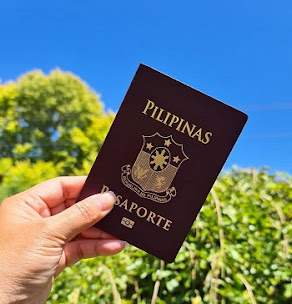In Kyoto alone, there are over 1,000 temples, varying in design and size. Some of them are more popular with tourists than the others, such as Ginkakuji. Another popular temple with a rich history is the Nanzen-ji temple. Here is a quick overview of Nanzen-ji temple.
Nanzen-ji is a Zen Buddhist Temple established in 1291 by Emperor Kameyama on the site of his detached former palace. Founded in the middle Kamakura Period, destroyed by fire in 1393, 1447, again in 1467, rebuilt in 1597 and expanded during the Edo Era, Nanzen-ji is one of the five Great Zen Temples of Kyoto.
The 22-meter high gate at the entrance of the temple called Sanmon gate, which was originally built by Todo Takadora in memory of those who had died in the siege of Osaka Castle in 1615, was rebuilt at the beginning of the 17th century in Higashiyama. It is also here where you can see beautiful cherry blossom trees that bloom during a segment of spring.
Nanzen-ji has an interesting legend - it is said that when Emperor Kameyama retired to his palace in Kyoto, disturbing events started to happen. Doors opened by themselves and the royal family felt ghostly hands press on them. A Buddhist priest was summoned to perform an exorcism. He burned incense, chanted, and prayed, but nothing happened.
The emperor then called a Zen priest named Fumon, who sat down in the palace and started to meditate. After he had finished, the ghost was gone. Emperor Kameyama was so impressed with the power of Zen that he bequeathed half of his palace to Fumon to enable him to teach Zen there. The Emperor also became a student in the new school, giving himself the title of Great Priest.
This was the beginning of the strong foothold of the Zen sect of Buddhism, which was introduced from China barely a century before. Even the royal family was not spared from its influence. After the Zen movement had taken over Nanzen-ji, five more Zen temples sprouted in Kyoto, all under the stewardship of Nanzen-ji. Of course, the Buddhist monks at Mount Hiei did not take this lightly. In 1393, they marched on Nanzenji and burned it to the ground.
The temple was then rebuilt, followed by being severely damaged in another fire half a century later, and then destroyed in 1467 during the Onin War. One hundred thirty years later, it was rebuilt for the last time.
More about the Garden by the Nanzen-ji Temple
Most of the old garden was lost in the repeated fires that ravaged Nanzen-ji Temple. A new Zen garden, called the Leaping Tiger Garden, was created by Koburi Enshu after 1611 and is an excellent representative of the dry garden (karensansui) style. The rock garden is famous for its rocks that are said to resemble tigers and cubs crossing through the water, or as a turtle and a crane, which incidentally were animals associated with the Isles of the Immortals. What is strikingly unusual about this rock and gravel garden are the large rocks grouped with maples, pines, and moss, located against a plain white wall behind the raked gravel.
Most of the old garden was lost in the repeated fires that ravaged Nanzen-ji Temple. A new Zen garden, called the Leaping Tiger Garden, was created by Koburi Enshu after 1611 and is an excellent representative of the dry garden (karensansui) style. The rock garden is famous for its rocks that are said to resemble tigers and cubs crossing through the water, or as a turtle and a crane, which incidentally were animals associated with the Isles of the Immortals. What is strikingly unusual about this rock and gravel garden are the large rocks grouped with maples, pines, and moss, located against a plain white wall behind the raked gravel.
Hotels near Nanzen-ji Temple
If you want a hotel or ryokan that’s located near Nanzen-ji, you have several options that you can pick from, depending on your budget and situation.
If you want a hotel or ryokan that’s located near Nanzen-ji, you have several options that you can pick from, depending on your budget and situation.
• In case you don’t mind a 3.2-kilometer distance from Nanzeji Temple, the Hotel Nikko Princess Kyoto will surely offer you a satisfying experience. A night here can be costly at 23,595 yen per night, however, the hotel has been showered with praises by reviewers, incurring 4.5 stores out of 1,117 reviewers on TripAdvisor. Among the 407 hotels in all of Kyoto, Hotel Nikko Princess Kyoto sits at 19th place. Their rooms are spacious, and the entire hotel has a very traditional, yet cozy atmosphere to it.
• A slightly more expensive hotel with a short distance of .5 a kilometer away from the Nanzen-ji temple is The Westin Miyako Kyoto. At around 40,000 yen a night, you get premium service that includes a magnificent breakfast buffet, pool access, and room service. As it is very popular with tourists with currently 2,601 reviews on TripAdvisor, it’s important to note that this hotel is a non-smoking hotel. With its clean, spacious, and comfortable rooms, The Westin Miyako Kyoto is quick to run out of booking slots. It is given a 4-star rating on TripAdvisor and is ranked 54 out of the 407 hotels in Kyoto.
• Kyoto Traveler’s Inn is a nearer and much cheaper option. It is only .08 of a kilometer away and costs less than 10,000 yen a night. For its price, it offers decent amenities, such as free wifi, non-smoking rooms, dry cleaning, a restaurant, and air conditioning. While it isn’t necessarily near means of transportation – like a train station, it is near many favorites for sightseeing around Tokyo – one of them being the Nanzen-ji temple. Out of the 217 reviews, it got on TripAdvisor, it garnered a rating of 3.5 stars, and is currently ranked as 163rd out of Kyoto’s 407 hotels. The address of Kyoto Traveler’s Inn is 91 Okazaki Enshojicho, Sakyo-ku, Kyoto 606-8344, Kyoto Prefecture on the map.
I recommend you add this place to your next Japan itinerary.
xoxo, Blair


































This place looks very peaceful. Soothing my eyes
ReplyDeleteThank you, Jogi!
Delete